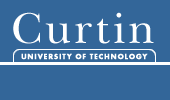150999 v.4 Bachelor of Science (Geographic Information Science)
BSc(Curtin)
Introduction
Geographic Information Science (GIScience) involves the computer capture, display and analysis of spatial information ranging in scale from local to global Geoscience is a fast growing area of applied computing and is a vital tool for environmental and natural resource management and a host of other applications. The three-year course consists of core studies that provide a thorough understanding of the theoretical and practical aspects of the structure, development, application, implementation and management of geographic information systems. In the final year the student may choose elective units in any appropriate application area including, but not necessarily restricted to, chemistry, computing science, environmental biology, environmental information science, geography, geology, remote sensing, surveying, cartography and urban and regional studies. Double degree programs in GIScience are also available. A GIScience degree may be combined with a Bachelor of Science (Applied Geology) or a Bachelor ofSocial Science (Geography). Separate entries are available in the Handbook for these courses.
Course Entry Requirements/Prerequisites
Applicable Mathematics. Students without this subject may be required to pass an approved bridging unit.
Specific Requirements
Field excursions are compulsory - students who do not complete this requirement will not have completed the course requirements. STAT elements considered for mature age entry are E and Q.
Recognition of Prior Learning
Applications for recognition of prior learning are assessed on an individual basis.
Duration and Availability
This course is three years full-time or equivalent part-time study.
Professional Recognition
The undergraduate bachelor degree in GIScience has received level one accreditation by the Australian Computer Society (ACS). Graduates are immediately eligible for associate membership with full membership following four years of professional practice. Graduates may also obtain membership of the Australasian Urban and Regional Information Systems Association (AURISA) and the Mapping Sciences Institute Australia (MSIA).
Career Opportunities
Employment prospects are excellent. Jobs range from Information Technology systems, developers who design and build geographic databases, Web-based systems and spatial management analysis tools to professionals who use GIS for providing specialist solutions in a range of environmental, business and development related activities.
Additional Course Expenses
Students may be expected to purchase a number of textbooks, readers and other vital study materials. In addition, students may also need to contribute some of the cost of consumables, which varies depending on the area of study.
Course Structure |
Hrs/Wk |
Credit |
Year 1 Semester 1 |
|
|
| 302318 |
v.1 |
|
Spatial Computations 181 |
5.0 |
25.0 |
| 4536 |
v.5 |
|
Geographic Information Systems 181 |
5.0 |
25.0 |
| 4579 |
v.2 |
|
Mathematics 181 |
4.0 |
25.0 |
| 8920 |
v.5 |
|
Cartographic Statistics 181 |
5.0 |
25.0 |
| |
100.0 |
Year 1 Semester 2 |
|
|
| 301995 |
v.4 |
|
Introduction to Communication Skills 116 |
2.0 |
12.5 |
| 302319 |
v.1 |
|
Spatial Computations 182 |
5.0 |
25.0 |
| 307421 |
v.1 |
|
Spatial Algorithms 182 |
3.0 |
12.5 |
| 4585 |
v.2 |
|
Mathematics 182 |
4.0 |
25.0 |
| 12449 |
v.3 |
|
Geographic Data Analysis 182 |
5.0 |
25.0 |
| |
100.0 |
Year 2 Semester 1 |
|
|
| 11711 |
v.4 |
|
Spatial Analysis 281 |
5.0 |
25.0 |
| 10163 |
v.8 |
|
Introduction to Programming Environments 152 |
4.0 |
25.0 |
| 7073 |
v.7 |
|
Thematic Cartography 281 |
5.0 |
25.0 |
| 8933 |
v.9 |
|
Software Engineering 251 |
3.0 |
25.0 |
| |
100.0 |
Year 2 Semester 2 |
|
|
| 1437 |
v.4 |
** |
Geography 112 - Global Change - Demography, Economic Development, Environment, Urbanisation and Social Inequality |
4.5 |
25.0 |
| 10422 |
v.3 |
|
Photogrammetric Mapping 282 |
5.0 |
25.0 |
| 10424 |
v.2 |
|
Coordinate and Mapping Systems 282 |
5.0 |
25.0 |
| 12037 |
v.3 |
|
Spatial Database Systems 382 |
5.0 |
25.0 |
| |
100.0 |
Year 3 Semester 1 |
|
|
| 10423 |
v.3 |
|
Digital Remote Sensing 281 |
5.0 |
25.0 |
| 10722 |
v.3 |
|
GIS Management 381 |
5.0 |
25.0 |
| 13381 |
v.2 |
|
Geometronics 381 |
5.0 |
25.0 |
| |
|
|
SELECT ELECTIVE UNITS TO THE TOTAL VALUE OF: |
|
25.0 |
| |
100.0 |
Year 3 Semester 2 |
|
|
| 10497 |
v.3 |
|
GIS Project 394 |
5.0 |
25.0 |
| 10721 |
v.4 |
|
Spatial Data Handling 382 |
5.0 |
25.0 |
| 302527 |
v.1 |
|
Spatial Modelling 382 |
5.0 |
25.0 |
| |
|
|
SELECT ELECTIVE UNITS TO THE TOTAL VALUE OF: |
|
25.0 |
| |
100.0 |
| ** |
Compulsory field excursion included in this unit |
| |
|
|
|
|
|
Availability
| Year | Location | Period | Internal | External | | 2004 | Bentley Campus | Semester 1 | Y | |
The information displayed above refers to study periods and locations where the course is available for first time entry. Students are normally only offered or admitted to a course once.
Click here for a printable version of this page
|

